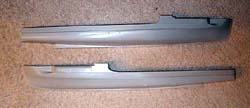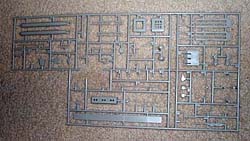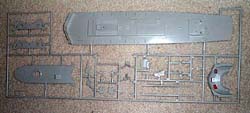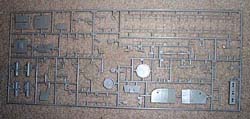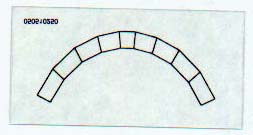Revell-Germany 1/72 Deutsches Schnellboot S-100 Class
By Ray Mehlberger
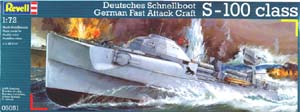 |
History
The very name "E-boat" was enough to scare even the most veteran seaman and it was deserved for the E-boat - that often quoted, but inaccurately termed vessel - was the only surface warship of the Kriegsmarine to push home frequent attacks within British territorial waters.
The Germans had experience with fast motor-torpedo boats in WWI and yet it was some years later that they developed the Schnellboot, or S-boot. For some reason, still not adequately explained, the Royal Navy christened them as E-boats, possibly standing for ENEMY MOTOR-TORPEDO BOAT.
Using their WWI experience, the German firm of Lürssen, designed and built a motor launch of steel construction for an American gentleman. It was powered by Daimler diesel engines. It was to be a prototype for the later mass production of some of the finest coastal fighting vessels ever built.
The Treaty of Versailles, in 1919, had forbidden Germany to retain, or to build, motor-torpedo boats. However, as you readers undoubtedly already know, the rise of German nationalism in the late 1920's, and early 1930's, meant that the repudiation of the badly policed treaty was only a matter of a few years away. The build up of the German fleet called for the production of "despatch boats", to be built to a modified Lürssen design and the first of these boats, S-1, was completed and commissioned in August of 1930 as UZ(S)-16.
In 1932, S-2, a slightly larger and better armed boat appeared on the scene. S-1 TO S-5 were powered by Daimler-Benz petrol engines, giving them a speed of about 34 knots. From S-6 (completed in 1933) diesel motors were used, giving the German coastal forces an operational and psychological advantage over the petrol-driven engines of the PT and MT boats of the U.S. Navy and Royal Navy.
The Kriegsmarine set up a standardised production run, in 1939, and from S-26 onwards the boats lost their angular wheel-house, it being replaced by an enclosed bridge, although several returned to the older flush decked appearance later in the war. Apart from supercharged engines, giving 40 knots plus, the standardised boats were armed with two 20mm AA guns, and two torpedo tubes (with two reloads). Later, as aircraft and MGB (motor gun boats) increased their S-boat hunting efforts, the gun fittings were upgraded to include an additional 20mm amidships plus a 3.7cm AA gun. S-701, built in 1944, bristled with twin 20mm guns forward, amidships, and on the quarter deck, with a 700 nautical mile radius of action.
WHAT'S IN THE BOX?:
|
|
The kit comes in a long (21" x 8 1/4" x 2 1/2") end opening box. I, personally, HATE this type of box. It is too easy for parts to fall out the end flaps and become lost. The box ends are sealed with just a circular piece of clear tape. Flat parts (like the windshield piece) can easily slide out past these end flaps, either side of the circular tape. A tray and lid type box would have been nicer.
All that aside, the box art is spectacular! It shows two S-boats going at full speed and being shelled in heavy seas. The S-boat in the foreground sports a black panther marking on the hull, halfway down its length, and this is one marking option in the kit.
All the parts trees are wrapped in one cello bag. However, in my kit, this bag was open at one end - entirely - and the other end was partially opened. I had about 4-5 parts floating around loose. To keep from losing them, I put them into an old 35mm film canister.
There are five light gray plastic parts trees in the kit and two full-hull halves. A piece of clear, thin sheet plastic is imprinted with windows (for the control house), and a spool of thread is included for rigging.
The small decal sheet gives markings for four different S-boats:
-
The S-boat pictured on the box art, with the black panther.
-
An S-boat with the numeral "68" on the bow.
-
An S-boat with the numeral "208" on the bow.
-
An S-boat with a shield insignia on the bow.

